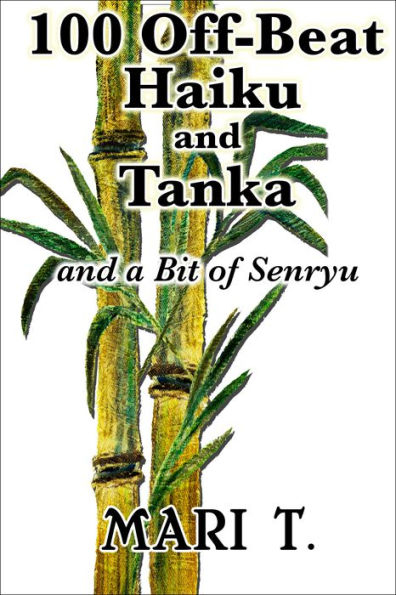“Haiku will become what the poets make of it . . .” (Van de Heuvel, 9), though here I hope I haven’t messed things up for them. The idea of shorter lines comes from Higgins/Harter (100-105) where it’s said that “. . . Approximately twelve English syllables best duplicates the length of Japanese haiku in the traditional form of seventeen onji . . .” (102), where onji are sounds not syllables. I’ve tried for eleven, 3-5-3 (tanka at 3-5-3-5-5), but where they still too often come out Off-Beat.
While the classic poets idealize nature where still:
"in the woods
there are haiku,
in the woods"
these deceptively simple looking little things sneak around behind our backs, where we find
"haiku come
out city windows
on misty nights."
Look out your own window and grab a handful.
* * *
Van de Heuvel, Cor, ed. “The Haiku Anthology”. New York: Fireside. 1986. Print. ISBN: 0-671-62837-2.
Higginson, William, with Penny Harter. “The Haiku Handbook: How to Write, Share, and Teach Haiku”. New York: Kodansha. 1989. Print. ISBN: 978-4-7700-1430-6.
“Haiku will become what the poets make of it . . .” (Van de Heuvel, 9), though here I hope I haven’t messed things up for them. The idea of shorter lines comes from Higgins/Harter (100-105) where it’s said that “. . . Approximately twelve English syllables best duplicates the length of Japanese haiku in the traditional form of seventeen onji . . .” (102), where onji are sounds not syllables. I’ve tried for eleven, 3-5-3 (tanka at 3-5-3-5-5), but where they still too often come out Off-Beat.
While the classic poets idealize nature where still:
"in the woods
there are haiku,
in the woods"
these deceptively simple looking little things sneak around behind our backs, where we find
"haiku come
out city windows
on misty nights."
Look out your own window and grab a handful.
* * *
Van de Heuvel, Cor, ed. “The Haiku Anthology”. New York: Fireside. 1986. Print. ISBN: 0-671-62837-2.
Higginson, William, with Penny Harter. “The Haiku Handbook: How to Write, Share, and Teach Haiku”. New York: Kodansha. 1989. Print. ISBN: 978-4-7700-1430-6.

100 Off-Beat Haiku and Tanka and a Bit of Senryu

100 Off-Beat Haiku and Tanka and a Bit of Senryu

Product Details
| BN ID: | 2940156016686 |
|---|---|
| Publisher: | Mari T |
| Publication date: | 03/21/2019 |
| Sold by: | Smashwords |
| Format: | eBook |
| File size: | 193 KB |
